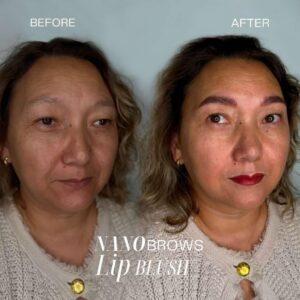Permanent makeup, also known as cosmetic tattooing or micropigmentation, has been a popular aesthetic procedure since the 1980s. It allows people to have the look of makeup without the daily application. However, as with any cosmetic procedure, some people may regret getting permanent makeup and want it removed. In this blog post, we’ll be discussing whether or not permanent makeup can be removed, the different methods of removal, and what to expect during the removal process.
Can Permanent Makeup Be Removed?
Yes, it is possible to remove permanent makeup. However, the processes for removal vary depending on the type of permanent makeup used, the age and depth of the tattoo, and the condition of the skin.
Methods of Removal:
Laser tattoo removal is one of the most common methods used to remove permanent makeup. Specialized lasers target the pigment particles in the skin, breaking them down into smaller fragments that the body can naturally eliminate. Multiple sessions may be required, and the effectiveness of laser removal can vary depending on factors like the type of pigment used and the depth of the ink.
Saline Tattoo Removal: This method involves injecting a saline solution into the treated area to lift the pigment out of the skin. Over time, the pigment fades as the body’s natural healing processes remove the saline and pigment particles.
Microdermabrasion and Chemical Peels: These techniques involve exfoliating the top layers of the skin, which can help lighten or remove the pigment over time. However, they may not be as effective as laser or saline removal for deeper permanent makeup.
What to Expect During the Removal Process:
It’s important to note that the success of permanent makeup removal varies depending on factors such as the type of pigments used, the depth of the pigment placement, and the individual’s skin type and healing response. The pain during the removal process can vary from person to person but can be described as feeling like a rubber band snapping against the skin. You may also experience redness, swelling, and blistering after the procedure. Complete removal may not always be achievable.
Before attempting any permanent makeup removal procedure, it’s crucial to consult with a skilled and experienced dermatologist, or tattoo removal specialist who can assess your specific case and recommend the most appropriate method for your situation. They can also provide guidance on what to expect in terms of results, recovery, and potential side effects. If you are considering permanent makeup, it is essential to think carefully about the process and the long-term effects it may have. Always make sure that permanent makeup is something you truly want before deciding to proceed with the procedure.




